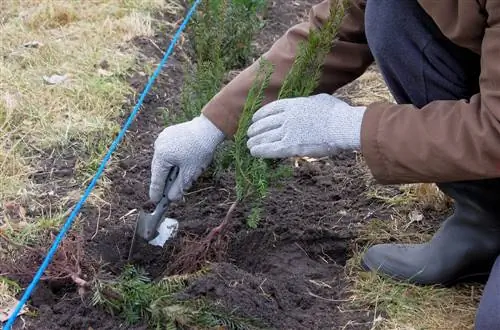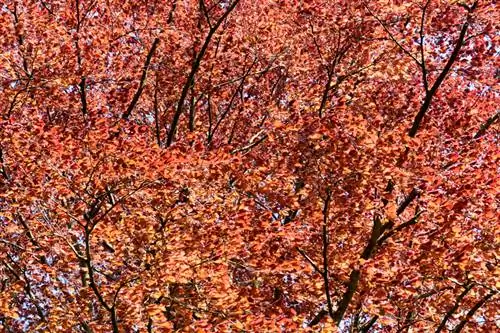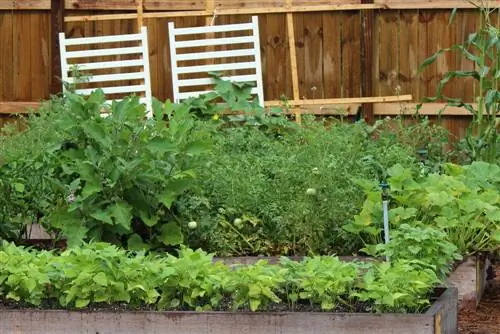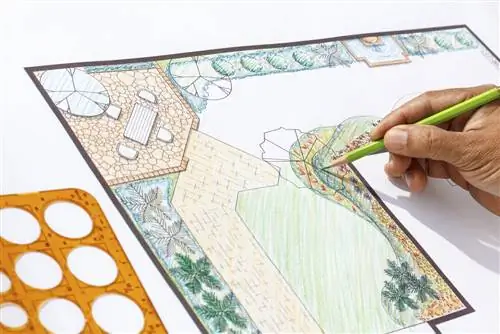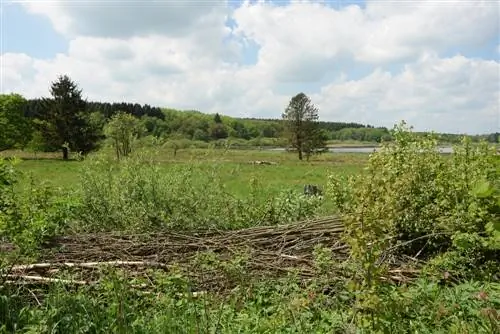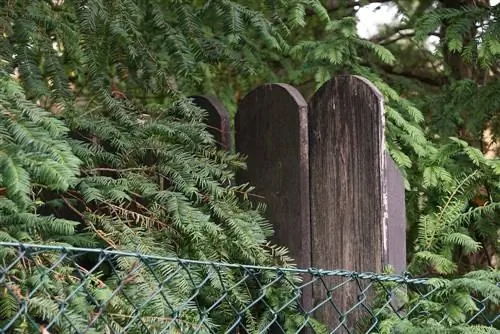- Author admin [email protected].
- Public 2023-12-16 16:46.
- Last modified 2025-01-23 11:22.
Hedges are the most popular fencing around green spaces. They serve as privacy, sun and wind protection and create intimate spaces in the garden. At the same time, many animals find shelter and food in the thickets. So that the boundary fits perfectly with the design of your property and your needs, it should be planned thoroughly.
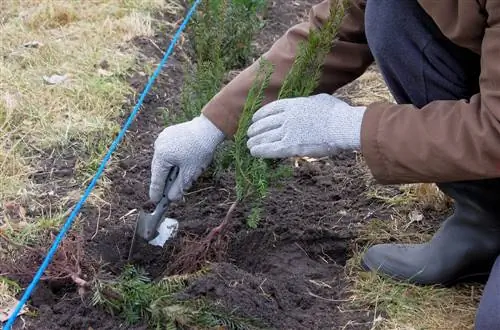
How to plan a hedge for the garden?
When planning a hedge for the garden, you should consider the purpose (visibility protection, flowers), the type of plant (evergreen, deciduous), the height, the climate and soil conditions and the amount of care required. Create a detailed planting plan to determine the arrangement and number of plants.
What purpose should the hedge serve?
Should the hedge provide a permanent green privacy screen or complement the sea of flowers in the garden in a visually appealing way? Privacy hedges are planted very densely so that they grow into a living wall. Colorful flower hedges are lighter and not only set attractive accents in spring.
Do you prefer evergreen or deciduous trees?
If you want protection against unwanted views all year round, the hedge should be planted with evergreen bushes. If the plants lose their leaves in winter, the property is open to views. But you can enjoy the seasonally changing appearance of these plants.
Do you love flowers or do they bother you?
A flowering hedge that is visited by numerous insects can be extremely attractive. However, bees and bumblebees can also sting and are dangerous for allergy sufferers or small children.
How high should the hedge be?
Very tall hedges cast a lot of shadow and can darken the property and the amount of maintenance must not be underestimated. Please also consider: If a hedge becomes too large, this can lead to conflicts with the neighbors.
What are the climate and soil conditions?
Hedge plants also place special demands on the substrate. Therefore, choose plants that suit the conditions of your garden.
How much time do you want to invest in caring for the hedge?
Do you enjoy gardening or is it more of a chore? Be sure to include this aspect when planning the enclosure, as some trees need to be cut twice a year. For a long hedge, the amount of care required should not be underestimated.
Helpful: The planting plan
If you don't decide on a hedge made up of uniform plants, a detailed planting plan is recommended:
- Enter the plants from above, drawn as circles at a freely chosen scale that corresponds to the eventual diameter of the bushes.
- When sketching, start with the large trees.
- Fill the remaining gaps with small filler trees. This ensures a smooth transition.
- This will give you a good overview of the number of plants required.
Tip
You can find tools from various providers on the Internet that can be helpful for individual planning.

